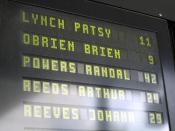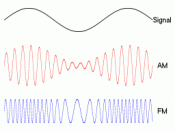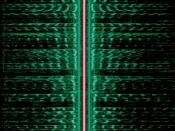RADIO
In the modern society, radio is the most widely used medium of broadcasting and electronic communication : it plays a major role in many areas such as public safety, industrial manufacturing, processing, agriculture, transportation, entertainment, national defense, space travel, overseas communication, news reporting and weather forecasting. In radio broadcasts, they use the radio waves which can be both microwaves and longer radio waves. These are transmitted in two ways: amplitude modulation (AM ) and frequency modulation ( FM ). These two kinds of wave have many differences.
Radio waves are among the many types of electromagnetic waves that travel within the electromagnetic spectrum. Radio waves can be defined by their frequency (in hertz, after Heinich Hertz , who first produced radio waves electronically), which is number of times they pass through a complete cycle per second; or by their wavelength, which is determined by the distance (by meters) that is traveled from the crest of one wave to the crest of the next.
Radio frequencies are measured in units called kilohertz, megahertz, and gigahertz. (1 kilohertz = 1000 hertz : 1 megahertz = 106 hertz, 1 gigahertz = 109 hertz). All radio waves fall within a frequency range of 3 kilohertz, or 3000 cycles per second to 30 gigahertz. Within the range of frequencies, radio waves are further divided into two groups or bands such as very low frequency ( VLF 10-30 kHz ), low frequency (LF 30-300 KHz), medium frequency ( MF 300-3000 KHz), high frequency ( HF 3-30 MHZ) and very high frequency ( VHF 30-300MHZ).
Amplitude modulation is the oldest method of transmitting voice and music through the airwaves is by amplitude modulation. This is accomplished by combining a sound wave from a microphone, tape, record, or CD with a 'carrier' radio wave. The result :...


